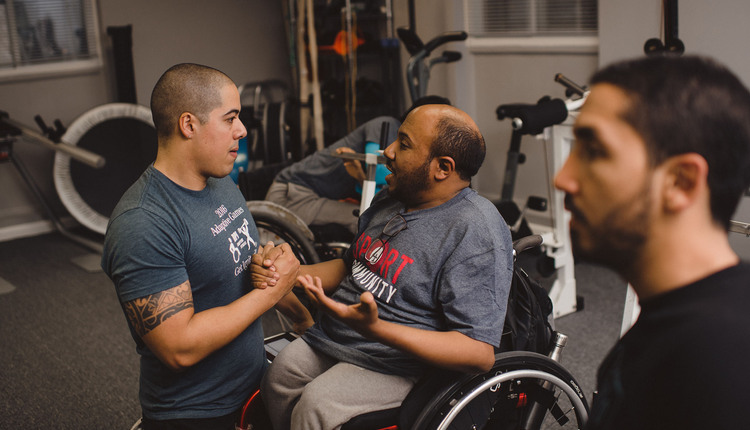
There is a lot of opportunity in the corporate wellness space for fitness professionals. If you're ready to explore corporate wellness, or if you've been trying to tap into the market with little or no luck, it's important to understand the reality of working with the corporate clientele. Here are three commonly held myths about corporate wellness that could save you wasted time and energy.
Myth 1: Companies realize the importance of keeping their employees healthy, so it should be a fairly easy to get in.
A company may, in theory, understand that having a healthier workforce may mean more productive employees, less sick days and the potential for lower health care costs. Budgeting a wellness or fitness program and putting it in practice, however, may be a different story. The return on investment of wellness programs isn't always immediate or obvious, which in many cases is necessary to justify ongoing budgeting. Approach a company as if you are as important as any other of their business partnerships; be professional and prove your credibility.
Myth 2: Companies have big budgets.
When we hear the word "corporate," we often think of large institutions or corporate giants. Larger companies typically have contracts with large national insurance carriers who offer comprehensive coverage for traditional medical insurance. To meet the growing need for work-balance and "wellness" demands of employees, these companies now provide Employee Assistance Programs (EAP) offering a wide-range of "life-balance" benefits including sessions with therapists, college-prep assistance, care for aging parents and reimbursements for gym memberships. What does that mean for you? Big companies may be less apt to budget for additional wellness programs. You may find that small and mid-sized companies (less than 2,500 employees) are more open to budget for your customized programs whether it be lunch and learns or on-site fitness programs.
Myth 3: What you do for one company will work for any other company.
If you've successfully worked with a company, what you offered may not be exactly what every other company wants or needs. It behooves you to get an understanding of the company culture; for example a regional technology company will have a far different culture than a local real estate agency and you would tailor your proposal differently for each. You also will want to find out who are the decision-makers as they vary company-to-company; Human Resources often manages wellness programs, and many companies are now forming employee-driven wellness committees who are given a budget and empowered to drive the program as they see fit. Know that budgets change year-to-year and priorities shift based on the industry, personnel changes and the company agendas.
While there is great opportunity to leverage in corporate wellness, it takes time to foster relationships more so than with individual clients. Take time to understand their business and company culture and you may need to be flexible with your offerings in order to meet the company where they are, not where you think they should be.
Myth 1: Companies realize the importance of keeping their employees healthy, so it should be a fairly easy to get in.
A company may, in theory, understand that having a healthier workforce may mean more productive employees, less sick days and the potential for lower health care costs. Budgeting a wellness or fitness program and putting it in practice, however, may be a different story. The return on investment of wellness programs isn't always immediate or obvious, which in many cases is necessary to justify ongoing budgeting. Approach a company as if you are as important as any other of their business partnerships; be professional and prove your credibility.
Myth 2: Companies have big budgets.
When we hear the word "corporate," we often think of large institutions or corporate giants. Larger companies typically have contracts with large national insurance carriers who offer comprehensive coverage for traditional medical insurance. To meet the growing need for work-balance and "wellness" demands of employees, these companies now provide Employee Assistance Programs (EAP) offering a wide-range of "life-balance" benefits including sessions with therapists, college-prep assistance, care for aging parents and reimbursements for gym memberships. What does that mean for you? Big companies may be less apt to budget for additional wellness programs. You may find that small and mid-sized companies (less than 2,500 employees) are more open to budget for your customized programs whether it be lunch and learns or on-site fitness programs.
Myth 3: What you do for one company will work for any other company.
If you've successfully worked with a company, what you offered may not be exactly what every other company wants or needs. It behooves you to get an understanding of the company culture; for example a regional technology company will have a far different culture than a local real estate agency and you would tailor your proposal differently for each. You also will want to find out who are the decision-makers as they vary company-to-company; Human Resources often manages wellness programs, and many companies are now forming employee-driven wellness committees who are given a budget and empowered to drive the program as they see fit. Know that budgets change year-to-year and priorities shift based on the industry, personnel changes and the company agendas.
While there is great opportunity to leverage in corporate wellness, it takes time to foster relationships more so than with individual clients. Take time to understand their business and company culture and you may need to be flexible with your offerings in order to meet the company where they are, not where you think they should be.
















